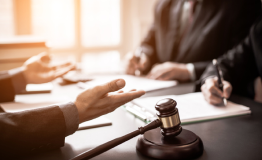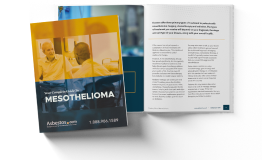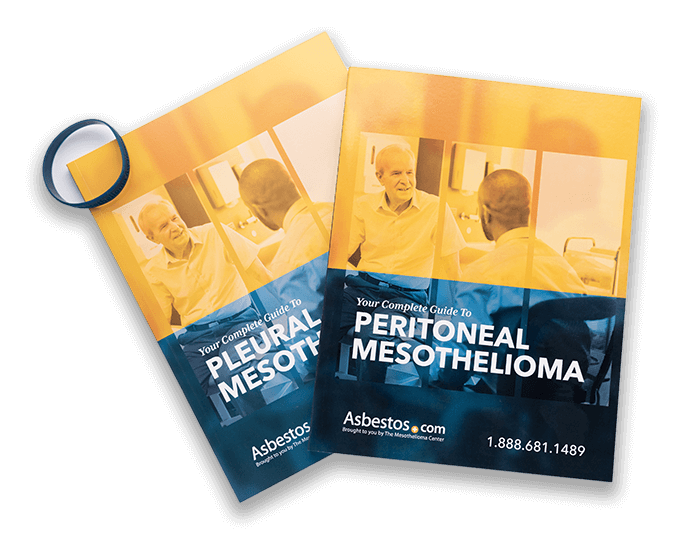Asbestos in Alaska
Alaska is one of the lowest-ranking states in the U.S. for asbestos-related deaths. Environmental and occupational exposure to the mineral still occurs. The state's complex and active geology creates massive ultramafic and serpentine mineral ore deposits. These two rock types contribute to naturally occurring asbestos (NOA).

Written by Michelle Whitmer | Scientifically Reviewed By Arti Shukla, Ph.D. | Edited By Walter Pacheco | Last Update: July 16, 2024
Asbestos Exposure in Alaska
Alaskan industries have widely used processed asbestos for commercial materials. Examples include insulation, pipe and furnace wraps, roof shingles, floor tiles and textured paints. Despite the associated health risks, many Alaskan companies used the toxic mineral as a building material. The U.S. Environmental Protection Agency (EPA) began to regulate its use in the 1970s and ’80s.
In January 2022, the state of Alaska announced it was preparing to file a lawsuit against the federal government. It claims lands received as part of the Alaska Native Claims Settlement Act contain asbestos and other toxic substances. The case will seek assistance to clean up the 548 harmful sites throughout Alaska.
Alaska’s Occupations and Environmental Areas at Risk
The mineral’s natural resistance to fire, heat, electrical and chemical damage has inspired many industrial uses. Alaskan industries with the highest risk of asbestos exposure include shipbuilding, mining, milling, oil refining and power generation.
Asbestos deposits form alongside other minerals that are frequently mined and processed. Mining can release airborne fibers if minerals at these sites contain asbestos. The exposure puts miners and surrounding populations at risk of developing asbestos-related diseases.
Further, the consumers of any contaminated materials are also at risk. This problem is growing in Alaska’s construction industry. Asbestos contamination at many local sources complicates the high demand for gravel.
Challenges Facing the Alaskan Construction Industry
The discovery of naturally occurring asbestos has slowed or halted the progress of various construction projects in Alaska. In 2000, a project to resurface 20 miles of the Dalton Highway stalled after workers found asbestos at the site. This discovery delayed the project and significantly increased its overall cost.
In Ambler, the construction of a sewage lagoon and an airport project stopped for years after a similar discovery. The discovery prompted the closure of a local gravel pit in 2003. Gravel from the asbestos-contaminated pit supplied city roads and became a public health issue when vehicle use generated clouds of airborne dust.
This dust is hazardous for drivers of All-Terrain Vehicles (ATVs) that frequent these roads. Finding a nearby gravel source free of naturally occurring asbestos was unsuccessful. Some locations in Alaska need access to gravel sources free of NOA. This obstacle is challenging for upcoming construction projects. One example is a proposed new gas pipeline that will require 50 to 60 million cubic yards of gravel to complete.
Sources of Natural Asbestos Deposits in Alaska
Four locations in Alaska’s panhandle contain deposits of asbestos. These include the cities of Juneau and Ketchikan. The City and Borough of Juneau predict that asbestos is present in most of the region’s high-quality rock deposits. Southeast Alaska also contains asbestos deposits throughout Wrangell-St. Elias National Park and along the Yukon River near Kobuk Valley.
In Central Alaska, natural asbestos deposits and historic asbestos prospects occur along a northeast-trending ridge of the Yukon-Tanana Upland Terrane. This area includes portions of the Yukon River and the Dalton Highway. West Alaska features asbestos deposits on the Cape Newenham peninsula near Bristol Bay. To the north, the mineral-rich mountains of the Brooks Range contain large deposits of jade, copper and asbestos.
Other notable areas with naturally occurring asbestos in the Arctic Circle include the cities of Kobuk, Ambler, Shungnak and Dahl Creek. Experts believe more deposits will occur over time, specifically in mineral-rich locations.
Jobsites with Known Asbestos Exposure:
- Arctic Surplus
- Fish Creek Quarry
- Ambler Gravel Pit
- Bonnie Brae Quarry
- Golden Valley Electric Association
- Elmendorf Air Force Base
- Mountain Aviation of Sitka
- Sitka Paper Mill in Anchorage
- Anchorage Hospital
- Ladd Air Force Base at Fairbanks
- Clinton Mine Div.
- Cassiar Asbestos Corp., Ltd.
- Georgia Pacific Paper Mill in Ketchikan
- Slate Creek Asbestos
- U.S. Naval Base at Kodiak
- California Creek Mine
- Seward Ships Drydock
- Lemon Creek Quarry
- Alaskan Pipeline at Valdez
- Treadwell Quarry
Arctic Surplus
Arctic Surplus is a former Alaskan salvage yard covering 24 acres in southeast Fairbanks. Also known as Arctic Salvage and McPeak Salvage, an investigation deemed the site a public health hazard. It revealed soil and groundwater contaminated with asbestos. The investigation also uncovered past exposures of workers to asbestos, lead and other harmful on-site contaminants.
The site accumulated salvaged materials and scrap for more than 40 years. The materials included asbestos rolls, bricks, pipe wrapping and insulation. In 1989 the Environmental Protection Agency surrounded the site with a fence and removed 22,200 pounds of asbestos.
Arctic Surplus was on the National Priorities List as a Superfund site the following year. Cleanup efforts and safety evaluations continued for decades until removal from the National Priorities List in 2006.
Use of Asbestos Gravel in Alaska
In February 2010, state Rep. Reggie Joule, R-Ala., introduced House Bill 333, allowing the use of gravel contaminated with naturally occurring asbestos in private and state-run construction projects. In addition, it set out to give immunity to landowners and people who supply or use the contaminated gravel, essentially blocking any litigation from injury, illness, death or other damages related to asbestos exposure.
The bill died in committee, but the high demand for gravel remained. Significant projects faced stalls and setbacks from a lack of access to uncontaminated gravel. The House revived the bill two years later as House Bill 258. This time, it passed into law, and went into effect on May 5, 2012.
Several federal agencies in the U.S. strictly regulate asbestos-containing materials. The regulation of naturally occurring asbestos is also growing in popularity.
California and Virginia have been regulating the use of NOA for years. Several other states are currently considering similar measures.
This Page Contains 12 Cited Articles
The sources on all content featured in The Mesothelioma Center at Asbestos.com include medical and scientific studies, peer-reviewed studies and other research documents from reputable organizations.
- Ruskin, L. (2022, January 3). Alaska prepares to sue federal government over contamination on Native corporation land. Retrieved from https://www.ktoo.org/2022/01/03/alaska-prepares-to-sue-federal-government-over-contamination-on-native-corporation-land/
- Agency for Toxic Substances & Disease Registry. (2011). Public Health Assessments & Health Consultations. Retrieved from http://www.atsdr.cdc.gov/HAC/PHA/HCPHA.asp?State=AK
- Agency for Toxic Substances & Disease Registry. (2010, January 20). Preliminary Public Health Assessment for Arctic Surplus. Retrieved from http://www.atsdr.cdc.gov/HAC/pha/pha.asp?docid=898&pg=1
- Alaska Department of Environmental Conservation. (2011). Naturally Occurring Asbestos in Alaska. Retrieved from http://www.dec.state.ak.us/air/anpms/Asbestos/Nat_asb.htm
- Alaska Department of Environmental Conservation. (2003). Alaska Top Hazardous Air Pollutants: Asbestos. Retrieved from http://www.dec.state.ak.us/air/anpms/asbestos.pdf
- Centers for Disease Control. (n.d.). Asbestosis and Related Exposures. Retrieved from http://www.cdc.gov/niosh/nas/RDRP/appendices/chapter3/a3-97.pdf
- Centers for Disease Control and Prevention, National Center for Health Statistics. (2015, January). Underlying Cause of Death 1999-2013 on CDC WONDER Online Database. Retrieved from http://wonder.cdc.gov/ucd-icd10.html
- LegiScan. (n.d.). Alaska House Bill 333. Retrieved from https://legiscan.com/AK/bill/HB333/2009
- LegiScan. (n.d.). Alaska House Bill 258. Retrieved from https://legiscan.com/AK/bill/HB258/2011
- U.S. Environmental Protection Agency. (2015, June 11). Alaska Cleanup Sites. Retrieved from http://yosemite.epa.gov/r10/cleanup.nsf/webpage/Alaska+Cleanup+Sites
- U.S. Environmental Protection Agency. (2012, November 27). NPL Site Narrative for Arctic Surplus. Retrieved from http://www.epa.gov/superfund/sites/npl/nar1284.htm
- U.S. Environmental Protection Agency. (2012, November 27). NPL Site Narrative for Fort Richardson (USARMY). Retrieved from http://www.epa.gov/superfund/sites/npl/nar1401.htm







